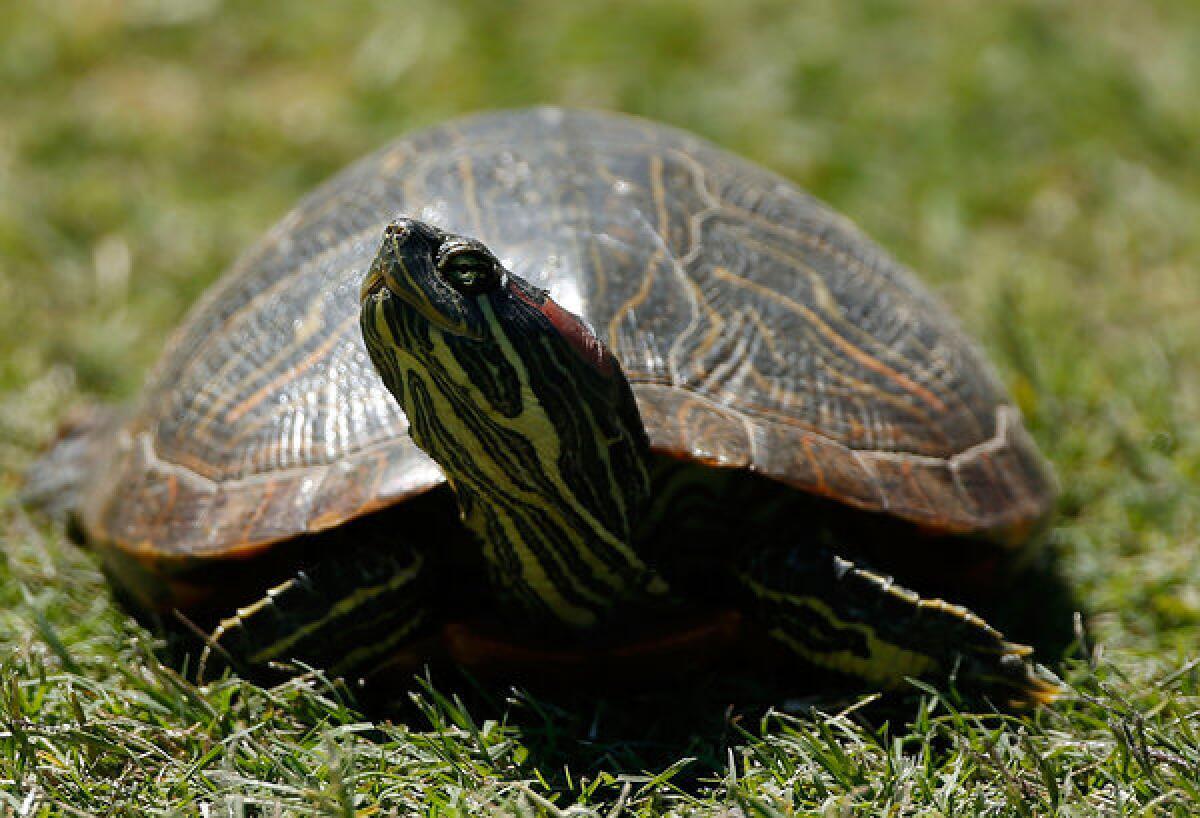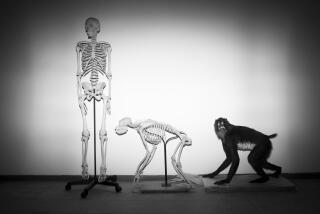How the turtle got its shell

- Share via
It’s a debate that’s left more than a few scientists shell-shocked: Just how did the turtle come to acquire its unique suit of armor?
Some have insisted for decades that the turtle’s carapace evolved from bony, scale-like growths that developed on the skin of ancient reptiles, similar to the armor found on ankylosaur dinosaurs or armadillos.
Another theory, however, argues that the shell is the result of a different transformation. Instead of forming from so-called osteoderms, the shell actually formed when the ribs of certain reptiles began to grow ever broader and straighter, losing their barrel-like curvature. (Watch a video animation of this transformation theory here and here.)
PHOTOS: 10 shocking facts about turtles
Now, in a paper published Thursday in the journal Current Biology, researchers added fuel to that second theory by reexaming the fossil remains of a peculiar-looking South African reptile that existed 260 million years ago in the Permian period.
That creature -- Eunotosaurus africanus -- had a lizard-like body with a broad, round midsection that looked as if it had swallowed a large frying pan. It also had short arms and legs.
For many years Eunotosaurus was considered to be an early ancestor to turtles, but was essentially stripped of that honor in the late 1960s and largely forgotten. Proponents of the dermal ossification theory had insisted the reptile’s peculiar broad, flattened ribs were not related to turtle evolution. They were a coincidence.
But then came the discovery of another peculiar fossilized reptile in China in 2008. This creature, which lived about 220 million years ago, had an even broader, rounded midsection and wide, flat ribs as well. Odontochelys semitestacea lacked the top shell of a turtle, but it did have a plastron -- the bony chest plate that turtles have.
Together, the features of these two reptiles appeared to establish a clear evolutionary path to the first turtles, which appeared about 210 million years ago, study authors say.
“The discovery of Odontochelys really opened up the case again,” said lead author Tyler Lyson, a paleontologist at the Smithsonian Institution. “It freed paleontologists from this self-imposed constraint where we were always looking for an early proto-turtle that had osteoderms.”
Lyson and colleagues have sketched out an evolutionary process in which the ribs and spine grew steadily thicker before eventually fusing together to form an exterior shell made up of about 50 pieces. The real trick, however, was that during that evolutionary process, turtles and their ancestors adopted a new way of breathing.
While muscle tissue between animal ribs helps them to expand and contract their chest while inhaling and exhaling, turtle ribs are fused in place. In order to breath, turtles rely on their abdominal muscles, which exert force on a sack that contains all of their internal organs. The turtle exhales when its lungs are squeezed between the top of its shell and its other organs. The turtle inhales when that pressure is released.
“The shell is a complex structure; it isn’t just going to appear all of a sudden. It’s going to appear over time,” Lyson said.
While Lyson said it was clear to him and his colleagues that the long-forgotten Eunotosaurus was more closely related to turtles than other reptiles, he believes some scientists will be slow to accept the argument.
“This is a highly contentious area,” Lyson said of turtle evolution. “I’m sure I won’t convince everybody, but I think it’s a really good step forward.”
Return to Science Now blog.
Follow me on Twitter @montemorin







